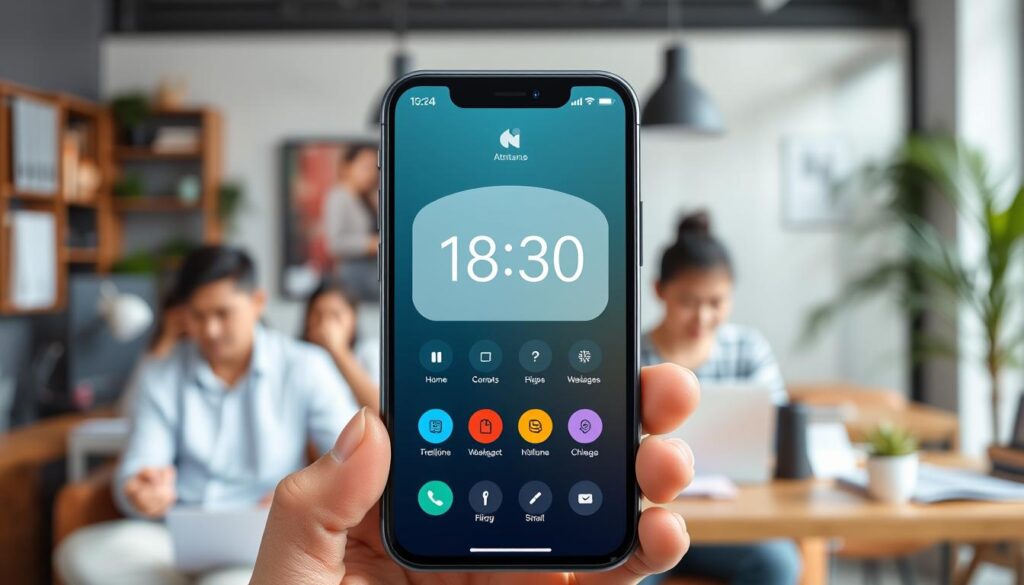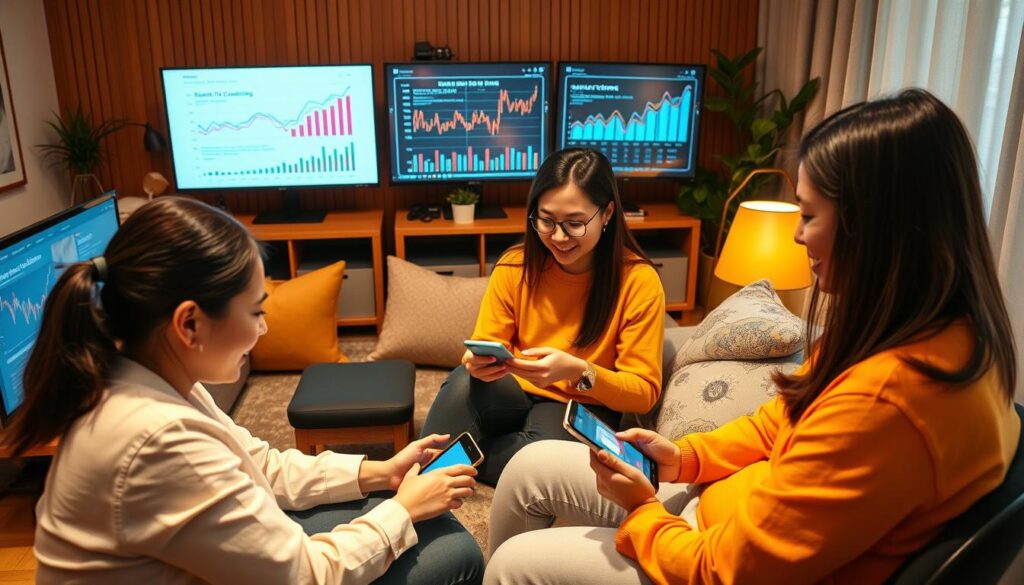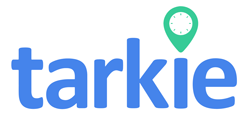In today’s fast-paced work world, have you thought about how companies ensure accurate pay for their employees? With more teams working remotely and old tracking methods failing, mobile attendance apps are key. They make payroll more accurate and cut down on errors from manual logging.
As companies in the Philippines deal with hybrid work, using mobile payroll and attendance apps is crucial. These tools help track work in real-time, easing the workload and avoiding costly mistakes. They also build trust with employees by being open and clear. Let’s dive into how these apps change payroll and make work more efficient.
Key Takeaways
- Mobile attendance apps reduce payroll discrepancies by improving tracking accuracy.
- Integration with payroll systems cuts administrative workload by 30%.
- Real-time updates can decrease tardiness by 25% for remote teams.
- Automated attendance systems enhance HR administrative efficiency by 20-25%.
- Companies report a 15% increase in employee satisfaction with transparent attendance processes.
Introduction to Mobile Attendance Apps
Mobile attendance apps change how businesses track work hours, mainly in the Philippines’ growing remote workforce. These tools let employees log their hours on smartphones and tablets. This makes clocking in and out quick, reducing delays from old paper logs.
More companies are moving to digital attendance with mobile apps. These apps have cool features like GPS and facial recognition. They help collect accurate data and prevent time theft by making sure employees log their hours correctly.

Studies show that over 75% of HR teams save a lot of time with these apps. They also cut buddy punching by about 90%, making attendance data more reliable. Plus, employees can manage their schedules themselves, which boosts engagement and efficiency.
Using mobile attendance apps makes employees more accountable and improves workforce management. These apps work on many devices and can connect with other systems. They help companies easily adopt modern ways of tracking attendance.
| Feature | Benefit |
|---|---|
| GPS Tracking | Ensures accurate location data for remote employees. |
| Facial Recognition | Reduces time theft with biometric verification. |
| Geofencing | Allows clocking in and out within a specified area. |
| Self-Service Portals | Increases employee engagement and management efficiency. |
| Integration with Payroll Systems | Simplifies payroll processing and minimizes errors. |
Why Mobile Payroll Solutions are Essential for Remote Teams
Remote work has grown a lot, with an 86% increase worldwide. This makes mobile payroll solutions key for companies to work better. Old payroll methods often fail with remote teams, causing delays and mistakes.
Mobile payroll helps a lot. It uses automated time-tracking to cut down errors by almost 80%. This is very important for small to medium-sized businesses in the Philippines. It makes payroll faster, letting HR teams do more important work.
Mobile payroll works well with HR tools. It lets managers make better decisions with data. This makes reports 25% faster. It also helps teams work better, with a 20% boost in performance.

Using mobile payroll also saves money. Companies can cut payroll costs by up to 15%. It makes payroll more accurate, reducing errors by about 30%. This helps follow labor laws and avoid disputes.
In short, mobile payroll changes how companies work with remote teams. It makes work easier and gives a competitive edge. For more info, check out work-from-home tracking software features to improve your payroll.
How Mobile Attendance Apps Streamline Attendance Tracking
Mobile attendance apps make tracking attendance easier for many companies. They allow for quick clock-ins and clock-outs. This cuts down on the time spent on manual timekeeping.
With this timekeeping software, employees can check their attendance on their phones. This makes them more responsible for their hours.
![]()
Using mobile attendance apps can save a lot of time. Companies say they save at least 3 hours per week per employee on attendance tasks. These apps also help reduce absenteeism by about 25%.
- Biometric tracking systems cut instances of time theft, like buddy punching, by up to 50%.
- Real-time data accessibility in cloud-based systems has resulted in a 20% increase in productivity for businesses.
- Employers can enjoy a 10% improvement in employee punctuality compared to traditional methods.
Mobile attendance apps do more than just track attendance. They help businesses run more smoothly, with up to 15% better efficiency. Employees can access HR processes from anywhere, leading to better productivity and a happier team.
Adding these apps to daily routines helps HR teams do their jobs better. They can handle tasks like leave approvals and shift management more easily. This makes employees happier and saves HR costs. Mobile attendance apps are a smart choice for companies wanting to boost productivity.
Integrating Mobile Attendance Apps with Payroll Systems
Integrating mobile attendance apps with payroll systems is key for better efficiency. This link ensures clock-in and clock-out times are synced with payroll systems. Old ways of tracking attendance often lead to errors and delays.
Mobile attendance solutions fix these problems, making payroll integration faster and more accurate.
In the Philippines, companies using mobile attendance apps save a lot of time and cut down payroll mistakes. They see a 50% drop in admin tasks. This tech also helps follow labor laws, making HR work smoother and keeping employees happy.
Also, businesses get instant updates on who’s in and who’s out. This lets managers tackle any issues fast, keeping the team motivated. Some apps even use biometrics, making it easy and safe for employees to log in.
Benefits of Accurate Timekeeping through Mobile Attendance Apps
Accurate timekeeping is key for businesses in the Philippines to stay competitive. Mobile attendance apps help by automating time tracking. This cuts down on errors, making payroll more reliable.
These apps also save money by reducing manual tracking costs by 40%. This lets businesses focus on other important tasks. Plus, happy employees are more productive, with up to 40% more satisfaction.
Real-time tracking helps spot team workload issues. It shows 20-30% of employees might work extra hours. This can lead to burnout, but apps help manage it.

Mobile apps improve scheduling by 50% and cut HR workload by 20%. They’re essential for managing data well.
Automated systems can cut payroll processing time by 75%. This boosts efficiency and helps businesses grow. It also reduces paper use and makes things more transparent.
Mobile Payroll, Remote Tracking, Attendance Apps: Enhancing Efficiency
Mobile payroll and remote tracking systems have changed how we manage labor. Businesses use attendance apps to track employee productivity in real-time, no matter where they are. These apps sync with cloud storage, making it easy to check attendance data.
Biometric systems prevent time theft by accurately recording who is working. Advanced face recognition technology ensures precise attendance tracking. An attendance kiosk speeds up clock-ins, reducing wait times and improving efficiency.
- Real-time data syncing lets you monitor productivity of both on-site and remote workers.
- Tracking attendance patterns helps make better labor management decisions.
- Flexible time entry settings meet the needs of different teams.
Using mobile attendance solutions can lower payroll errors. Time tracking apps improve the accuracy of time logs, making payroll easier. You can also download timesheet data in formats like XLS or CSV, helping with payroll integration.
In the Philippines, businesses see big improvements in efficiency by using these technologies. They can focus more on their main work and less on paperwork. For more info on using attendance apps with payroll, check out this link.
| Feature | Benefit |
|---|---|
| Biometric Attendance | Eliminates buddy punching and time theft |
| Real-Time Syncing | Enables immediate tracking of employee hours |
| Cloud Storage | Facilitates easy access and performance monitoring |
| Flexible Time Entry | Customizable to fit diverse team needs |
| Exportable Reports | Aids in payroll integration and analysis |
By using mobile payroll and remote tracking tools, companies can change their labor management. This leads to better productivity and smarter use of resources.
The Role of Real-Time Updates in Payroll Processing
Real-time updates from mobile attendance apps are key for smooth payroll processing. They let companies update employee attendance instantly in their payroll systems. This means no more delays in reports or salary payments, making work more efficient.
Integrating HR tools with real-time tracking cuts down payroll errors. Studies show errors drop to under 1% with advanced tracking. With more remote workers, managing attendance has gotten harder. Real-time updates help tackle these challenges.
Real-time tracking brings clear benefits. It can cut labor costs by 20% and overtime by 15%. It also automates up to 90% of payroll tasks, lowering error risks.
Not managing time and attendance well can cost companies $30,000 a year. Old systems fail with remote work, leading to wrong hours reported. Real-time updates ensure accurate hours, even from afar. This keeps everyone in line with labor laws and boosts morale.
In short, real-time updates in payroll make things run smoother and improve employee accountability. Mobile apps for attendance boost engagement and productivity. This helps companies perform better overall.
Challenges of Adopting Mobile Attendance Apps
Mobile attendance apps bring many benefits, but they also come with challenges. One big issue is implementation hurdles, like fitting them into current HR systems. Without smooth integration, keeping track of data can be hard.
Another problem is network issues. In places with poor internet, apps may not work well. This is a big issue for businesses in the Philippines, where internet quality varies a lot.
Teaching employees to use these apps is also a challenge. They need to know how to get the most out of them. Companies must focus on training that covers both how to use the apps and how to apply them in real life.
To tackle these challenges, a careful plan is needed:
- Do thorough tests before starting to use the apps to find and fix problems early.
- Make sure to train employees well so they feel confident and skilled in using the apps.
- Find ways to ensure a stable internet connection, which is crucial in areas with poor service.
By tackling these challenges head-on, companies can make the switch to mobile attendance apps smoother. This can lead to better productivity and efficiency in the workplace.
| Challenge | Description | Mitigation Strategies |
|---|---|---|
| Integration Issues | Not being able to link with current HR systems can cause data problems. | Do detailed tests; plan out integration steps carefully. |
| Connectivity Concerns | Bad internet in remote spots can mess up tracking attendance. | Invest in strong network options; think about apps that work offline too. |
| User Training | Not training employees well can mean they don’t use the apps fully. | Start comprehensive training; offer ongoing help and support. |
Conclusion
Mobile attendance apps have changed how we handle payroll and manage teams, even for those working from home in the Philippines. They work well with payroll systems, making it easier to manage work hours. This can cut down on errors and save a lot of time and money.
These apps can make payroll reports faster by up to 70%. They also help track work hours better, reducing time theft. As more people work from home, using these apps is key for keeping teams engaged and processes smooth.
In short, using mobile attendance apps helps businesses grow and work better together. They focus on making work more efficient and keeping employees happy. Companies that use these tools are ready for the future of remote work.
Discover how Tarkie can streamline your payroll processing with real-time mobile attendance tracking—making remote team management easier and more efficient!
